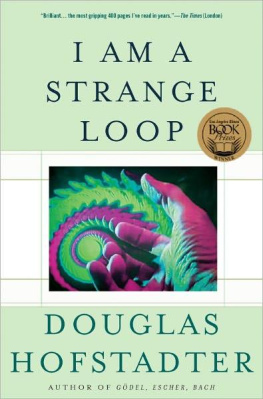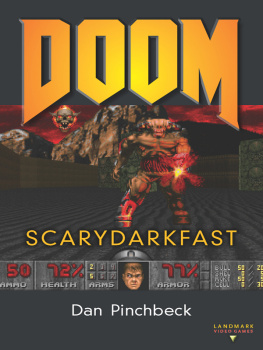Lee Drutman - Breaking the Two-Party Doom Loop
Here you can read online Lee Drutman - Breaking the Two-Party Doom Loop full text of the book (entire story) in english for free. Download pdf and epub, get meaning, cover and reviews about this ebook. year: 2019, publisher: Oxford University Press, genre: Politics. Description of the work, (preface) as well as reviews are available. Best literature library LitArk.com created for fans of good reading and offers a wide selection of genres:
Romance novel
Science fiction
Adventure
Detective
Science
History
Home and family
Prose
Art
Politics
Computer
Non-fiction
Religion
Business
Children
Humor
Choose a favorite category and find really read worthwhile books. Enjoy immersion in the world of imagination, feel the emotions of the characters or learn something new for yourself, make an fascinating discovery.
- Book:Breaking the Two-Party Doom Loop
- Author:
- Publisher:Oxford University Press
- Genre:
- Year:2019
- Rating:4 / 5
- Favourites:Add to favourites
- Your mark:
- 80
- 1
- 2
- 3
- 4
- 5
Breaking the Two-Party Doom Loop: summary, description and annotation
We offer to read an annotation, description, summary or preface (depends on what the author of the book "Breaking the Two-Party Doom Loop" wrote himself). If you haven't found the necessary information about the book — write in the comments, we will try to find it.
Breaking the Two-Party Doom Loop — read online for free the complete book (whole text) full work
Below is the text of the book, divided by pages. System saving the place of the last page read, allows you to conveniently read the book "Breaking the Two-Party Doom Loop" online for free, without having to search again every time where you left off. Put a bookmark, and you can go to the page where you finished reading at any time.
Font size:
Interval:
Bookmark:

Oxford University Press is a department of the University of Oxford. It furthers the Universitys objective of excellence in research, scholarship, and education by publishing worldwide. Oxford is a registered trade mark of Oxford University Press in the UK and certain other countries.
Published in the United States of America by Oxford University Press
198 Madison Avenue, New York, NY 10016, United States of America.
Lee Drutman 2020
All rights reserved. No part of this publication may be reproduced, stored in a retrieval system, or transmitted, in any form or by any means, without the prior permission in writing of Oxford University Press, or as expressly permitted by law, by license, or under terms agreed with the appropriate reproduction rights organization. Inquiries concerning reproduction outside the scope of the above should be sent to the Rights Department, Oxford University Press, at the address above.
You must not circulate this work in any other form and you must impose this same condition on any acquirer.
Library of Congress Cataloging-in-Publication Data
Names: Drutman, Lee, 1976 author.
Title: Breaking the two-party doom loop : the case for multiparty democracy
in America / by Lee Drutman.
Description: New York : Oxford University Press, [2020]
Identifiers: LCCN 2019009495 | ISBN 9780190913854 (hardback) |
ISBN 9780190913861 (uPDF) | ISBN 9780190913878 (ePub)
Subjects: LCSH: Political partiesUnited States. | DemocracyUnited States.
| United StatesPolitics and governmentPhilosophy.
Classification: LCC JK2265 .D78 2020 | DDC 324.273dc23
LC record available at https://lccn.loc.gov/2019009495
For my daughters, Elsa and Chava. May they grow up in a thriving and healthy democracy.
Parents wonder whether their children will still grow up in a democracy. Gallows political humor about the collapse of the republic creeps into ordinary conversation. No longer a shining model for the world, American democracy today strikes a more cautionary note. An anxious pessimism dominates.
By every expert judgment, the United States is slipping. In late 2017, the Economist Intelligence Unit downgraded the United States from full democracy to flawed democracy, and gave it the same ranking as Italy.
The August 2018 Bright Line Watch survey of 679 political scientists concluded: Our expert respondents perceive a consistent, ongoing decline in the overall quality of American democracy from 2015. Let me repeat: a one-in-six chance of democratic breakdown. Thats like rolling a die and hoping it doesnt land on Hungary.
Many of the initial dismal verdicts sprang from the unexpected election of Donald Trump as the forty-fifth president of the United States. But as I conclude writing, two years into his presidency, collective wisdom has evolved: Trump may not so much be the problem. He is instead the symptom of something much bigger.
This is a book about that something much bigger. Its a book about how our political system fell into this downward spirala doom loop of toxic politics. Its a story that requires thinking bigabout the nature of political conflict, about broad changes in American society over many decades, and, most of all, about the failures of our political institutions.
This is a book about whats gone wrong. But its also about what can go right. I have a solution to match the diagnosis. Two-party winner-take-all politics is fueling a calamitous zero-sum toxic partisanship. But theres a way out. America can become a multiparty democracy and break the destructive binary.
America now has a genuine, fully sorted, two-party system. This is a new and significant development. While weve always had a two-party system in name, for most of our history the two parties have been capacious, incoherent, and overlapping. This overlap lent a certain stability to American national politics, because it worked with, rather than against, our compromise-oriented political institutions.
This new era is qualitatively different: two distinct, national party coalitions organized around two distinct visions of American national identity, each claiming to represent a true majority. Only one other time in American history has the party system resembled this arrangement: the 1860s, when the United States fought a civil war and then tried to recover from one.
A fully divided two-party system without any overlap is probably unworkable in any democracy, given what it does to our minds. It leads us to see our fellow citizens not as political opponents to politely disagree with but as enemies to delegitimize and destroy. It turns politics from a forum where we resolve disagreements into a battlefield where we must win and they must lose.
A fully divided two-party system is decidedly unworkable in America, given our political institutions. We have separation-of-powers government designed to make narrow majority rule difficult to impossible. And yet we have a party system where both sides attempt to impose narrow majority rule on each other. The mismatch is unsustainable.
Finally, a fully divided two-party system is completely unworkable when the partisan divide is over the character of national identity, as it is today. This raises the stakes impossibly high and makes compromise impossible. It poses an existential threat to the future of American democracy.
Multiparty democracy is a big idea. But it is not a radical proposal. Almost all the worlds democracies are multiparty democracies, and the vast majority hold elections using proportional representation. The United States, with just two parties and an antiquated first-past-the-post (single-winner plurality) voting system, is the global outlier.
Multiparty democracies have consistently generated stable, moderate, compromise-oriented policymaking; higher voter turnout; more satisfied citizens; and better representation of political and ethnic minorities. In multiparty democracies, parties do not claim to represent true majorities. They promise to represent and bargain on behalf of the different voters and issues they represent. In multiparty democracies, coalitions are more fluid and flexible, built around compromisejust as the Framers of the American Constitution intended.
Multiparty democracy is not even new to the United States. As I will argue, from the mid-1950s through the mid-1990s, the national two-party system contained a hidden four-party system: liberal Democrats and liberal Republicans in the culturally liberal Northeast and Upper Midwest, the West Coast, and the big cities in between, and conservative Democrats and conservative Republicans in the rural, traditional parts of the country and the South. Each represented its own cluster of values and issue positions. None had a majority. All had to bargain. Enemies could become allies; allies could become enemies. The fate of democracy didnt hang in the balance each election.
At the height of the hidden four-party system, from the late 1960s to mid-1980s, American democracy was far more responsive and flexible than today, and landmark legislation flowed out of Washington, solving some big public problems.
The system began to collapse into two much more distinct parties in the 1990s, as liberal Republicans and conservative Democrats dwindled into irrelevance. Both parties lined up into distinct teams, with more and more centralized leadership, and national politics took on a new fierceness. Some vestiges of the old system hung around into the 2000s, helping to broker a few remaining bipartisan deals here and there. In 2010, when a Tea Party wave swept away all but a few of the last remaining moderates in Congress, America became the fully sorted two-party democracy we have today.
Font size:
Interval:
Bookmark:
Similar books «Breaking the Two-Party Doom Loop»
Look at similar books to Breaking the Two-Party Doom Loop. We have selected literature similar in name and meaning in the hope of providing readers with more options to find new, interesting, not yet read works.
Discussion, reviews of the book Breaking the Two-Party Doom Loop and just readers' own opinions. Leave your comments, write what you think about the work, its meaning or the main characters. Specify what exactly you liked and what you didn't like, and why you think so.













